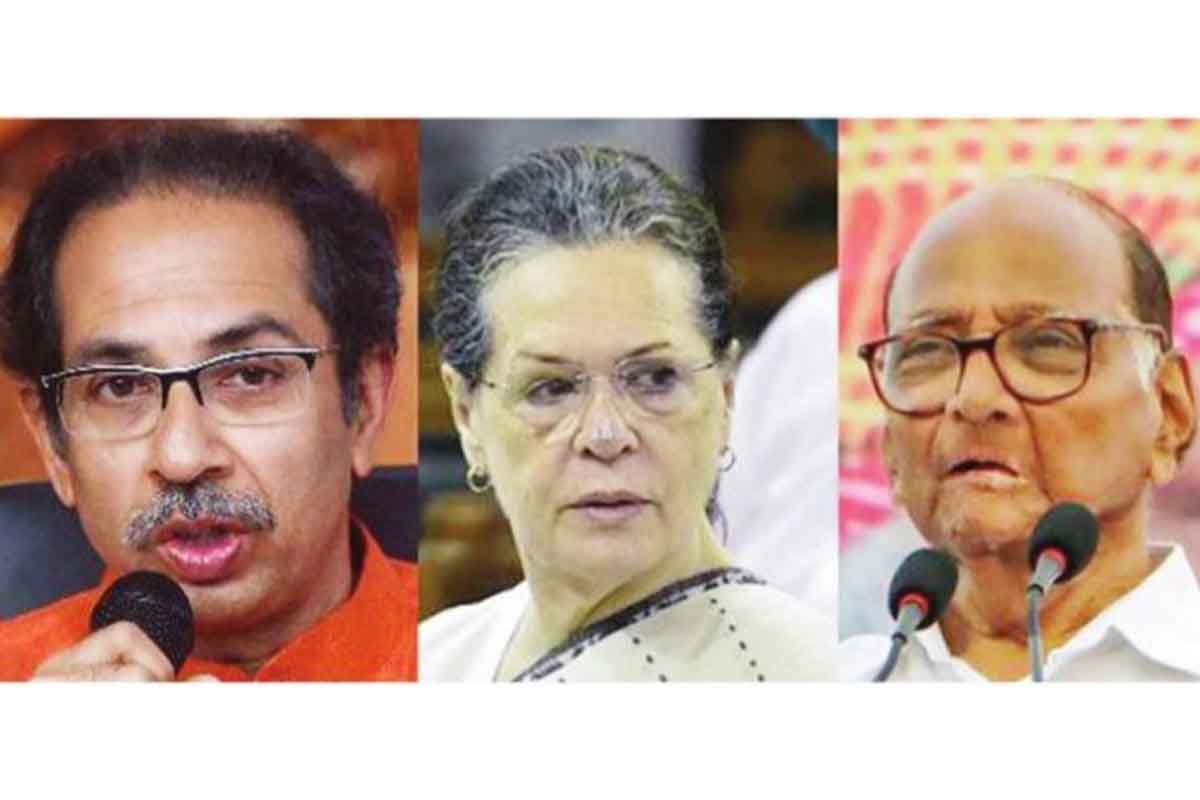Fight to protect Constitution, democracy begins today: Kharge
He also urged the people to come out and exercise their franchise in large numbers.
However, it is clear that in Indian politics, no party is untouchable if there is an opportunity for power sharing.

(SNS)
Maharashtra’s game of thrones is taking an interesting turn with the Shiv Sena, Congress and the Nationalist Congress Party getting ready to beat the BJP at its own game by combining to form the next government. Who would have imagined before the Assembly polls that such a non-BJP coalition, the first ever, could emerge after the fractured results?
The combined tally of Shiv Sena, NCP, and Congress would be above 150, against 145 seats required to form majority government in the 288-seat state assembly. Announcing the new formation, NCP chief Sharad Pawar said on Friday, “There is no possibility of mid-term polls. This government will be formed and it will complete five years. We all will ensure this government runs for five years.”
The Sena led a government in 1995 with the BJP and this will be a second stint. The three parties have hammered out a draft Common Minimum Programme, which focuses on the agrarian crisis and unemployment. Why is the BJP, which emerged as the single largest party, missing the opportunity to form the government? For some reason the Central leadership remained laid back and did not get actively in the negotiations or try to persuade the Sena to come on board.
Advertisement
Though the state has been put under President’s rule this week, the three partners are going ahead with their preparation to stake claim. The power sharing is the main tricky issue. The Sena, being the largest party in the alliance, is naturally the claimant for the CM’s post. The NCP is likely to get the Deputy chief minister’s post while the Congress that of the Speaker. The three will also share the cabinet berths according to their strength.
The question is whether the new government will be stable with its inherent contradictions? The concept of strange bedfellows is not uncommon in politics. However, in all probability such a rag tag coalition is more likely to collapse going by past experience. A similar experiment in Karnataka last year with the Congress backing the minor partner JD (S) to form the government to keep out the BJP was not all that successful. The coalition is just dragging its feet.
The last few years have witnessed several such coalitions but most of them were short- lived governments. The three players might put aside their ideological differences for the sake of power and the Sena is even willing to combine with secular parties for this purpose but it is only a question of how long and how well they would be able to manage the coalition frictions. The urgency for the players is that they do not want to miss a chance of coming to power when it is in sight.
It was the NCP chief Sharad Pawar who acted as the real power broker behind the scenes. If the Sena led government takes over, what would be the impact on the politics of Maharashtra? The Congress, which was strong in the state in the past, is now gasping for breathand it will be a life saving step if it could become a ruling coalition member. The same is the case for the NCP, which was almost on the verge of disappearing before the polls.
As for the Sena, the party is desperate as it is fed up of playing second fiddle to the BJP, which has overtaken the Sena as the senior partner in the state. The party has now realized that beyond a point the BJP cannot be defeated in the Hindutva game. The Sena wants to prove it can survive without the BJP. While the arithmetic might be in favor of the coalition but politics is said to be the art of the possible.
Running the coalition will be a difficult task with heterogeneous interests. First of all, while the leaders at the top might try to co-exist, what happens to the workers at the ground level who had been taking on the Sena all these years or for the Sainiks who had fought the Congress and the NCP till recently. Secondly, the BJP might choose to sit in the opposition for now but it is willing to play a waiting game to see how long the combination would sustain. It hopes that the differences might surface between the partners sooner or later.
However, it is clear that in Indian politics, no party is untouchable if there is an opportunity for power sharing. Did not the Right and the Left parties support the V.P. Singh government in 1989? Did not BJP align with the PDP, which the late former chief minister of Jammu and Kashmir Mufti Mohammad Sayeed described as the coming together of the North Pole and South Pole? The Sena-led government certainly deserves a chance but it is up to the coalition partners to make it a success.
Advertisement